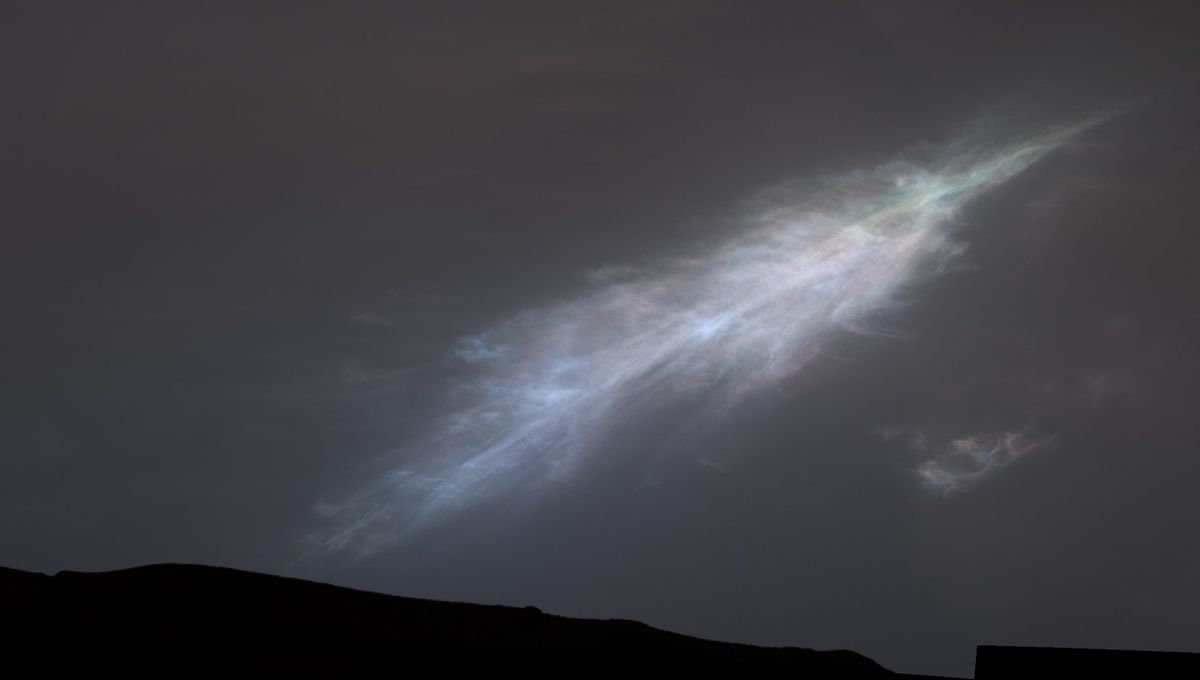
Noctilucent clouds on Earth are something quite spectacular, thin structures so high that they can still catch sunlight long after sunset, making them shine in many colors during twilight – noctilucent means night-shining. However, they are not an Earth exclusive – NASA’s Curiosity has seen them on Mars.
ADVERTISEMENT GO AD FREE
On the Red Planet, the clouds are not just water ice like on Earth, but can also be made of dry ice. Most of the thin Martian atmosphere is carbon dioxide, so frozen carbon dioxide also organizes itself in clouds.
Researchers report that a great time to see these clouds from Gale Crater, where Curiosity is located, is the early Autumn. Videos from the rover’s MastCam show the clouds changing colors as the night fell.
“I’ll always remember the first time I saw those iridescent clouds and was sure at first it was some color artifact,” Mark Lemmon, an atmospheric scientist with the Space Science Institute, said in a statement. “Now it’s become so predictable that we can plan our shots in advance; the clouds show up at exactly the same time of year.”
The clouds were seen for the first time by NASA’s Pathfinder all the way back in 1997. Curiosity has been on Mars since 2012, but it took until 2019 to see them. Perseverance has been on Mars for almost four years but has not seen them yet. Some regions of Mars might have better conditions to form them compared to others. As it stands, Gale Crater might be better than Jezero Crater, where Perseverance is exploring.
A major role might be played by gravity waves, vertical waves moving through a fluid, like the waves on the ocean. These atmospheric motions, combined with the right season (so temperature and evaporation), might be the mix to make them happen.
ADVERTISEMENT GO AD FREE
“Carbon dioxide was not expected to be condensing into ice here, so something is cooling it to the point that it could happen. But Martian gravity waves are not fully understood and we’re not entirely sure what is causing twilight clouds to form in one place but not another,” Lemmon said.
A paper discussing the clouds was published last year in the journal Geophysical Research Letters.
Source Link: Watch Iridescent Dry Ice Clouds Above Mars Spotted By NASA Rover